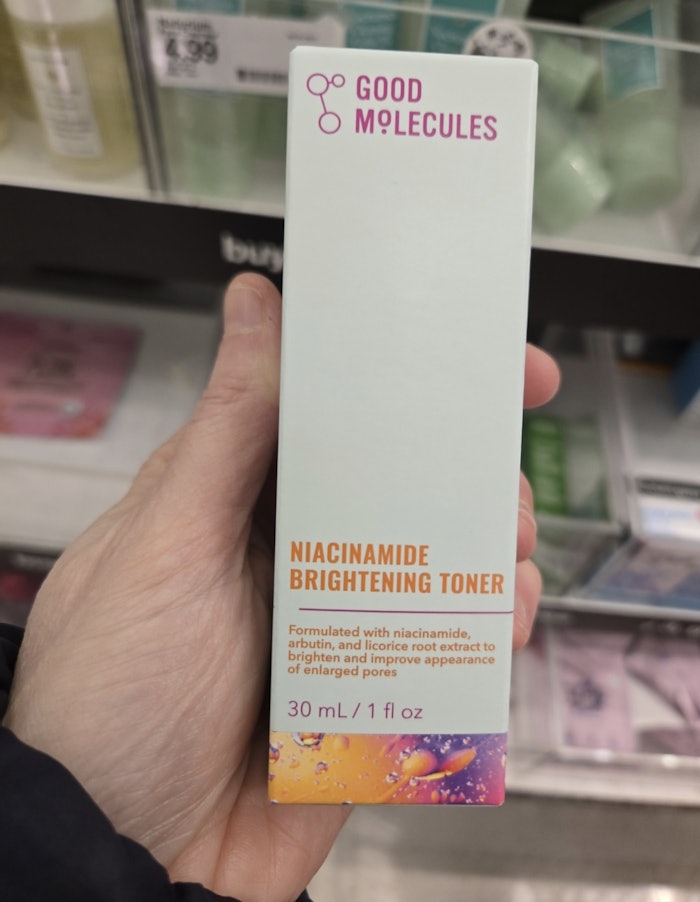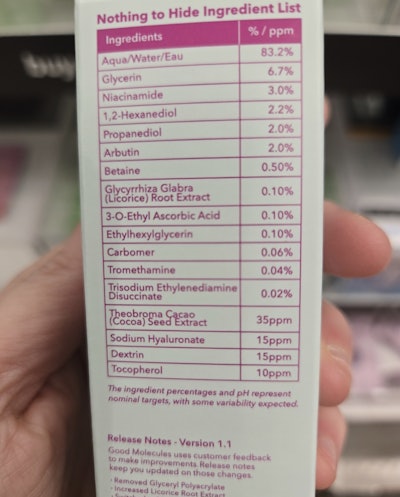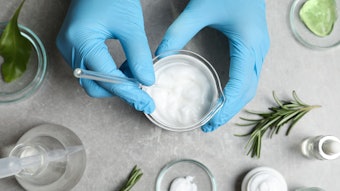
By 2030, skin brighteners are expected to reach US $31.0 billion, with consumer preferences for multipurpose products; e.g., combining lightening with anti-aging and hydration, per Future Market Insights. Notably, marketing for such products emphasizes inclusivity and natural radiance rather than fairness alone, the source adds. In this product spotlight, Good Molecules' Niacinamide Brightening Toner provides a strong example.
This article is only available to registered users.
Log In to View the Full Article
By 2030, skin brighteners are expected to reach US $31.0 billion, with consumer preferences for multipurpose products; e.g., combining lightening with anti-aging and hydration, per Future Market Insights. Notably, marketing for such products emphasizes inclusivity and natural radiance rather than fairness alone, the source adds. In this product spotlight, Good Molecules' Niacinamide Brightening Toner provides a strong example.
Good Molecules Niacinamide Brightening Toner
Good Molecules' Niacinamide Brightening Toner is an alcohol-free formula designed to promote a radiant, even complexion. Described as gentle yet effective, it helps to refine the look of pores while tackling dullness and uneven skin tone, leaving skin refreshed and balanced.
Key ingredients and claims include:
- Brightens and evens skin tone: Niacinamide (vitamin B3) targets discoloration and dullness for a more luminous appearance.
- Improves hyperpigmentation: Naturally derived arbutin visibly reduces dark spots and uneven patches.
- Soothes and calms: Licorice root extract helps minimize inflammation and irritation.
- Refines pores: Helps reduce the look of enlarged pores for a smoother texture.
After cleansing, users dispense the toner onto a cotton pad and sweep it across the face, or pat it directly into skin with the palms. It can be used daily, morning or night.
Additionally, the product:
- is highlighted for its pH of 6.4,
- has a vegan and cruelty-free formula and
- is alcohol-free.
Said to be appropriate for all skin types, the Good Molecules Niacinamide Brightening Toner aims to deliver balanced hydration and visible brightening without harsh ingredients.
Ingredients: Good Molecules Niacinamide Brightening Toner

Aqua/Water/Eau, Glycerin, Niacinamide, 1,2-hexanediol, Arbutin, Propanediol, Betaine, Glycyrrhiza Glabra (Licorice) Root Extract, 3-o-ethyl Ascorbic Acid, Ethylhexylglycerin, Carbomer, Tromethamine, Trisodium Ethylenediamine Disuccinate, Theobroma Cacao (Cocoa) Seed Extract, Sodium Hyaluronate, Dextrin, Tocopherol.
*Ingredients listed as shown on company website Sept. 21, 2025.
User Feedback: Good Molecules Niacinamide Brightening Toner
Following are example user reviews (edited for style), selected for their anecdotal insights on product form and function.
- It's super moisturizing and brightening. I love that it's a bit thicker than your average toner, too, and alcohol free. It's surprisingly soothing as well.
- Within a few days of using this, my red spots disappeared. My skin is so much brighter and even toned, and my pores are noticeably smaller. I even noticed some minor breakouts cleared up as well.
- I love that this does not contain alcohol and my skin does not feel dry or tight after using it.
- This toner actually contains several ingredients that will help brighten skin; I can already notice a difference.
- This toner is a thicker liquid which surprised me at first, but it sinks in the skin as quickly and smoothly as any watery toner.
- After about two weeks of consistent use, I really see a difference in my skin. It's clearer, my pores are visibly smaller and my skin doesn't feel dry or tight after using the toner. I actually feel like the toner is pretty moisturizing.
Formulating Skin Brightening
As DeHaven previously reported, as with other biochemical processes, addressing multiple pathways for skin lightening is more efficient than incorporating only one mechanism. Such an approach provides several possible advantages:
- Use of ingredient combinations that are gentler to skin;
- Increased effects due to mechanistic potentiation from multiple actives at several sites; and
- Better tolerability for skin, especially skin of color, with less risk of post-inflammatory hyperpigmentation.










